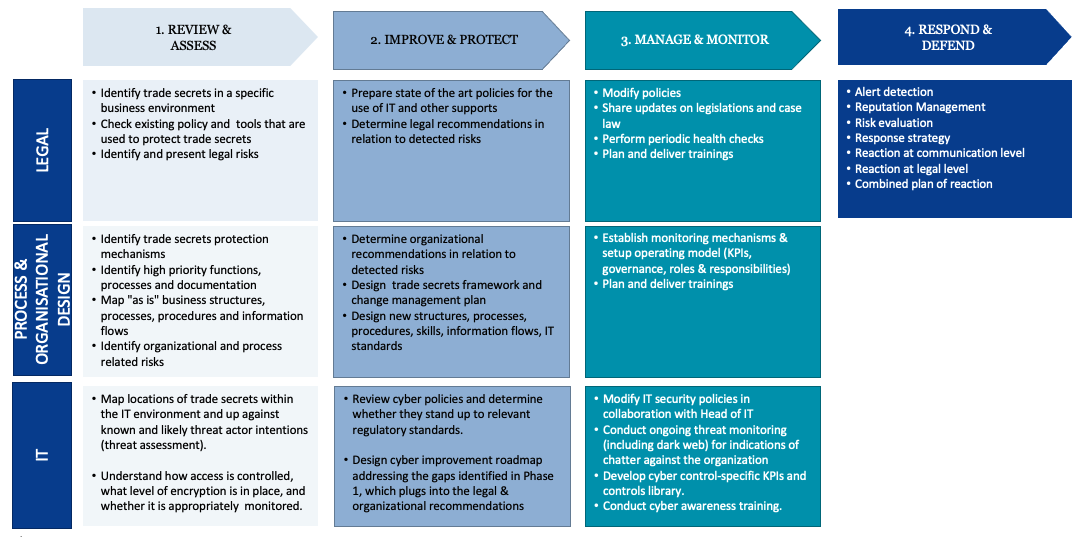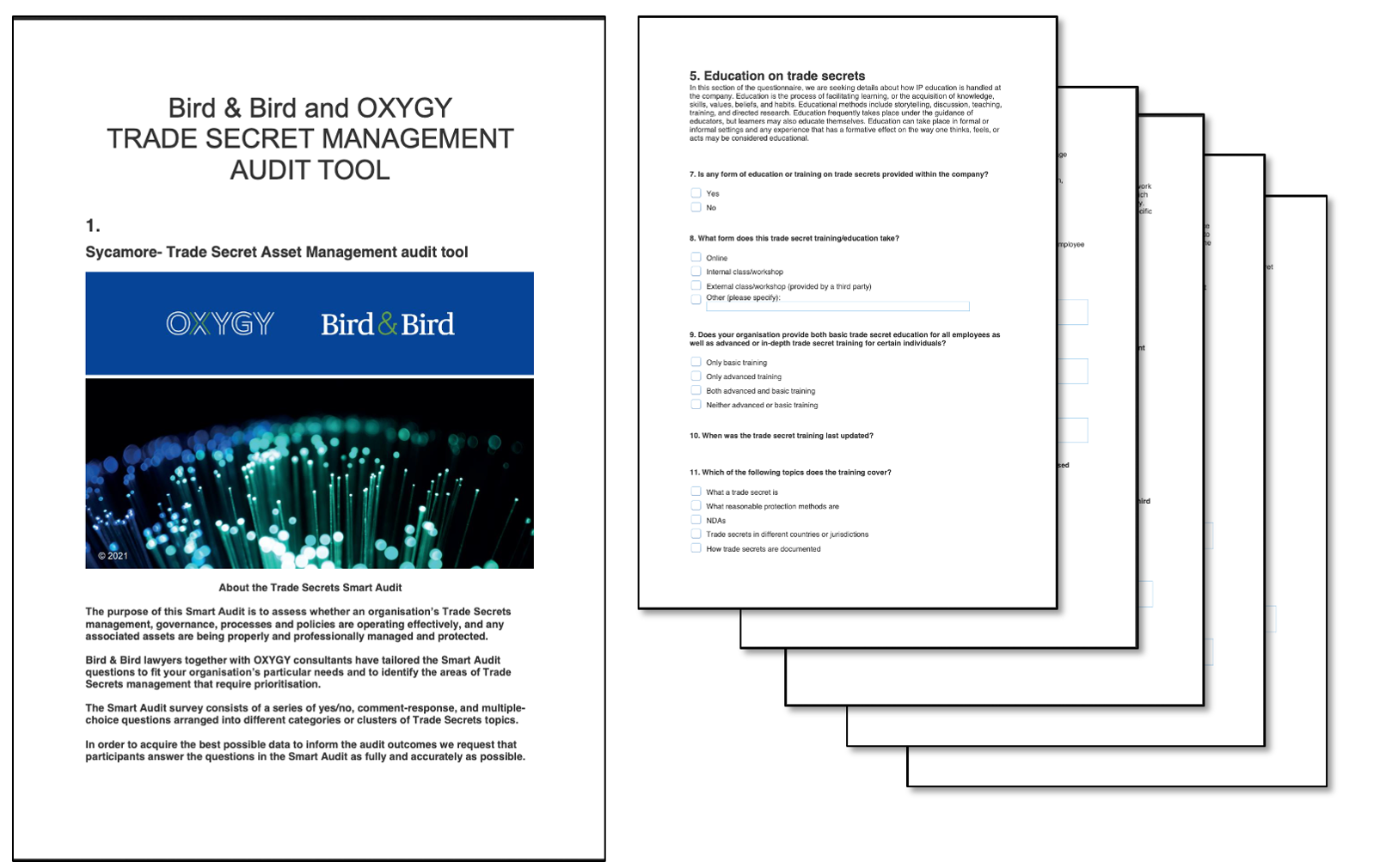Bird & Bird & OXYGY’s Trade Secrets Solution
Managing trade secrets is challenging; from identifying the secrets specific to your business to ensuring ongoing management and governance. They pose multi-layered risks within the people, processes, law and technology domains without careful consideration of legal, process/organisation and IT security dimensions. But a company’s Trade Secrets are worth protecting well; at one end of the spectrum, they represent the grey matter which separates the performance of a twenty-year industry veteran with a newcomer; and at the other, they can provide the platform to allow a newcomer to disrupt that industry veteran’s dominance.
OXYGY had the chance of interviewing a Senior manager at Deminor, a company that provides funding for litigation (including trade secrets) in return for a % share of the winnings. We asked her what criteria Deminor looks for in companies pursuing trade secrets claims:
- Evidence of a clear trade secrets policy;
- Evidence of processes designed to maintain, record and protect trade secrets;
- Roles divided amongst multiple functions across the organisation to tackle trade secrets management; and
- The trade secrets are protected, encrypted and stored securely.
Effective trade secret management requires an effective strategy to identify the risks and threats impacting a business’s trade secrets and to generate the necessary solutions covering the related organisational, legal and IT security aspects. A fit-for-purpose approach needs to be adopted to identify pragmatic and interdisciplinary solutions.
We divide our Trade Secrets Management Programme into four phases, with the first three phases presented as an integrated Bird & Bird and OXYGY offering, powered with technical solutions, such as our Smart Survey tool and the HAZEL tool designed by Chawton Innovation Services.

This article will examine Phase 1 of our Trade Secrets Management Programme, under which we review and assess the current state of Trade Secrets management in a company as well as delivers a clear diagnosis of the associated process, organisational, legal and IT security risks.
The very first step is to identify the company’s Trade Secrets. While most if not all of our clients will have Trade Secrets, many will not be aware of the scope of those secrets, and many more will not have defined what those secrets precisely are and how they can be protected. This is where we intervene. In the cadre of a client workshop: Bird & Bird will work on identifying what constitute Trade Secrets in a particular business environment and OXYGY will identify what organisational and security mechanisms have been put in place to protect said secrets.
Once we get a clear idea of what Trade Secrets are in the company’s possession, the next step is to generate a map of where the client is in terms of a Trade Secrets management framework. This involves leveraging OXYGY’s expertise in analysing business structures, processes, security policies and information flows, as well as Bird & Bird’s evaluation of existing policies, contracts and other legal mechanisms used to protect these Trade Secrets.

Of course, knowledge of a company’s Trade Secrets is not concentrated within a single entity or department, so it is important to generate this “map” efficiently and at scale. Our proprietary smart-survey tool is used to distribute Trade Secret questionnaires to relevant individuals in the client company. It contains ten substantive sections aimed at better capturing the company’s understanding of trade secrets, which protection mechanisms (including legal mechanisms) have been put in place, whether Trade Secrets metadata has been collected, and the relationships the company has with external stakeholders who may also have an interest in relevant Trade Secrets. Sycamore then collects this data centrally and helps us develop important insights on where the Trade Secrets are located, how they are being protected and the client’s risk exposure.
The final piece to Phase 1 is an assessment and presentation of the legal, process, organisational and IT security risks associated with the identified Trade Secrets. This risk assessment will clearly identify which areas should be prioritised in the following Phase of the engagement: Improve & Protect.
Our next piece will run through this second Phase which concerns how Bird & Bird and OXYGY develop recommendations around addressing the risks and protecting the secrets identified in Phase 1.
About the Authors
Edoardo Monopoli – CEO, OXYGY
Since 1995, I have partnered with senior executives on their personal, leadership team and business strategies for sustainable success, combining performance improvement with real people engagement.
Rob Williams – Partner, Bird & Bird LLP
I am a partner and co-head of our Intellectual Property Group in Bird & Bird LLP in London where I use my deep-level experience of complex IP strategy and disputes to advise clients from a range of IP-rich industries
Yuji Develle – Consultant, OXYGY
My strengths lie in collaborating with stakeholders in complex business ecosystems and in creatively designing new solutions to difficult problems.
I am passionate about exploring the tender interaction between technology and business models.
